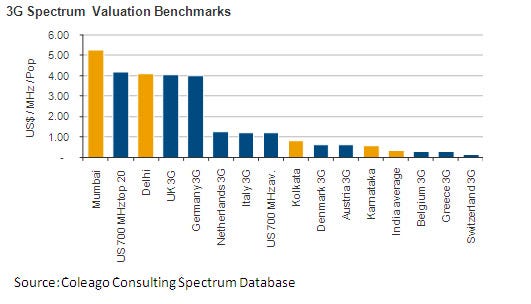India’s 3G licensing auction finally over
After what seems like years of waiting for it to start, and weeks of bidding, India’s 3G licensing auction has finally come to a close, with the biggest winner being the government. India raked in more than $14.6bn from the process, as operators fought to get the most desired chunks of spectrum.
May 20, 2010

After what seems like years of waiting for it to start, and weeks of bidding, India’s 3G licensing auction has finally come to a close, with the biggest winner being the government. India raked in more than $14.6bn from the process, as operators fought to get the most desired chunks of spectrum.
The auction lasted 34 days in all, and took place over 183 rounds. Vodafone, Bharti and Reliance were the big spenders, securing licenses in Mumbai and Delhi, while Tata, Idea, Aircel and STel focused on more rural areas.
State owned operators BSNL and MTNL were already allocated 3G spectrum in 2009, giving them a substantial head start over 3G rivals. So all in all, the auction has turned into a nice little money spinner for the government.
In an announcement, Vodafone said it secured 2x5MHz of 3G spectrum in nine circles for a total price of £1.74bn, covering more than 50 per cent of the urban population and more than 50 per cent of India GDP.
Vittorio Colao, chief executive of Vodafone, said: “This has been a very competitive auction for limited amounts of spectrum. Vodafone has secured a strategic footprint covering a large proportion of our existing and future revenues, particularly in the metropolitan areas.”
Graham Friend, managing director of Coleago Consulting, which advised one of the winning carriers (they’re not saying which), had this to say: “The resulting US$ / MHz / Pop (the standard benchmark) for Mumbai, for example, makes the prices paid in the UK and German 3G auctions look relatively good value. If the prices were adjusted for the relative differences in GDP per capita the Indian prices would be off the scale.”
But Friend continued: “Unlike the UK, the Indian operators will be able to deploy their networks more cheaply and achieve greater performance by jumping to 3.5G in the form of HSPA. The spectrum will be used immediately to relieve congestion on the 2G voice networks and India will quickly emerge as the centre of innovation for low cost smart phones, applications and new mobile business models. The auction winners will not have to wait 10 years before they can start earning a return. Indian 3G prices for Mumbai, Delhli and Kolkata were certainly high and above expectations but they were not anywhere near as exuberant as those of the UK or Germany.”

coleago-india
About the Author
You May Also Like












_1.jpg?width=300&auto=webp&quality=80&disable=upscale)
